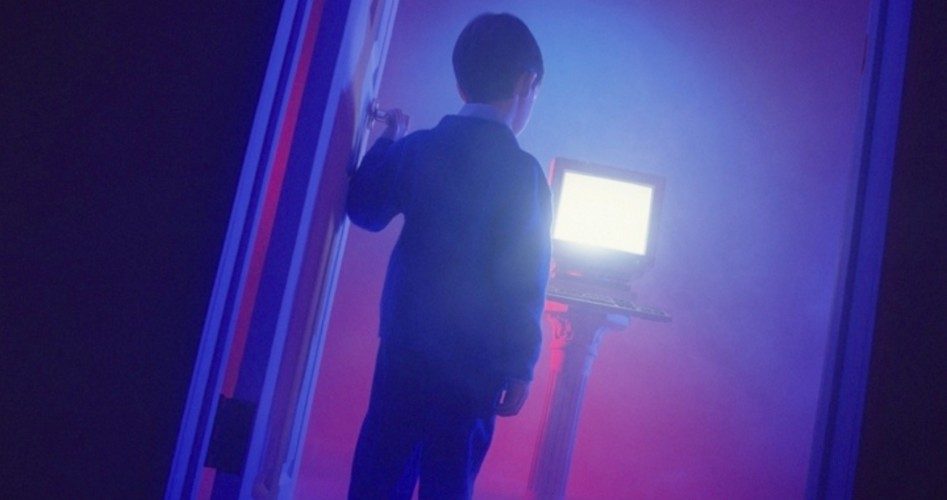
It’s a common and sad story of addiction. Thoroughly hooked, John began to ignore and disengage from other aspects of his life. His behavior deteriorated, and his personal relationships suffered. But John wasn’t in the grip of drugs or alcohol, and he wasn’t a middle-aged man. He was six years old — and his “bottle” was an iPad.
Although the names have been changed, John’s is a true story. His mother, Susan, bought him an iPad in first grade at the recommendation of a technology teacher. He eventually found the popular game Minecraft, which the educator claimed was just “electronic Lego.” But Susan soon learned why it’s the third-best-selling video game of all time despite not being introduced until 2009.
John was hooked.
As he became ever more addicted, he began losing interest in reading and baseball, the latter of which he’d loved; his behavior deteriorated, and he refused to do his chores. And some mornings he’d even remark that he saw the Minecraft cube shapes in his dreams.
But life was moving toward nightmare. John would throw tantrums when Susan tried taking the game away and, reflecting permissive modern parenting, she rationalized away her concerns and deferred to his wishes. Then, however, came the fateful evening that would shatter her illusions. As licensed psychotherapist Dr. Nicholas Kardaras, who treated Susan and John, wrote August 27 in the New York Post:
“I walked into his room to check on him. He was supposed to be sleeping — and I was just so frightened … [said Susan].”
She found him sitting up in his bed staring wide-eyed, his bloodshot eyes looking into the distance as his glowing iPad lay next to him. He seemed to be in a trance. Beside herself with panic, Susan had to shake the boy repeatedly to snap him out of it. Distraught, she could not understand how her once-healthy and happy little boy had become so addicted to the game that he wound up in a catatonic stupor.
Dr. Kardaras points out that it’s no coincidence tech designers and engineers make the most tech-cautious parents. As he writes, “Silicon Valley tech executives and engineers enroll their kids in no-tech Waldorf Schools.” And for high-profile examples of hi-tech titans embracing low-tech lives, he cites Steve Jobs, Google founders Sergey Brin and Larry Page, Amazon creator Jeff Bezos, and Wikipedia founder Jimmy Wales.
This could remind one of cartel kingpins who push drugs to others while keeping their own homes pure. Yet computers do have legitimate uses.
Of course, though, so do drugs.
The analogy is apt, too, says Kardaras, former clinical professor at Stony Brook Medicine and executive director of top rehabilitation center The Dunes East Hampton. While many parents instinctively sense that too much screen time is problematic, he says, “it’s even worse than we think.” Dr. Kardaras continues, “We now know that those iPads, smartphones and Xboxes are a form of digital drug. Recent brain imaging research is showing that they affect the brain’s frontal cortex — which controls executive functioning, including impulse control — in exactly the same way that cocaine does. Technology is so hyper-arousing that it raises dopamine levels — the feel-good neurotransmitter most involved in the addiction dynamic — as much as sex.”
This is why different researchers have all drawn the same conclusion, using slightly different language: Screens are “electronic cocaine,” “digital heroin,” “digital pharmakeia” (“drug” in Greek).
And “hyper-arousing” is the word. Many have noted, as Kardaras writes, that today’s children often “become bored, apathetic, uninteresting and uninterested when not plugged in,” with attention spans perilously short when not on their digital drug. This isn’t hard to understand. Seventeenth-century French philosopher Blaise Pascal once wrote, “All of humanity’s problems stem from man’s inability to sit quietly in a room alone.” And modern research attests to this inability, with Science in 2014 reporting on research showing that many people “would rather be electrically shocked than left alone with their thoughts.” That may be a shocking thought, but the truth is that the ability to tolerate quiet time — and ultimately enjoy and benefit from it — can be nurtured.
It can also be undermined.
Today we raise children in the antithesis of an empty room. Growing up in an environment akin to a “sensory inundation chamber,” they operate at such a high level of stimulation that returning to a more normal one can almost be like entering a sensory deprivation chamber. The result? To paraphrase and update a line from the late Paul Harvey’s most famous radio commentary: if I Were the Devil, I’d make entertainment so exciting so that anything else would appear dull and uninteresting. Then what could compete? School? Family conversation? Deep thought? How about that most quiet and serene place people are supposed to go but that young people are abandoning: church? Boring, huh?
We’d readily recognize that a youth had a problem if he viewed porn five hours a day. Yet what can be said about the fact that, as Dr. Kardaras also reports, “8- to 10 year-olds spend 8 hours a day with various digital media while teenagers spend 11 hours in front of screens”? Putting aside that many kids are sometimes watching porn, and that this amount of media usage indicates unhealthful addiction, something else is certainly true: As with viewing porn, it’s a waste of time.
Not only do screen activities generally range from negative to morally neutral, but what are children not doing when they’re wiling away those hours?
They’re not reading.
They’re not developing a skill.
They’re (usually) not learning something valuable.
In general, they’re not being productive.
And note: People today will often lament that they don’t see children playing outside to nearly the degree that once was common. Of course not. Like six-year-old John, many of them are screen slaves.
This screen slavery also forestalls the building of important relationships. To use an analogy I once heard, if your spouse regularly came home, gave you a cursory greeting and then went into his room, closed the door and became one with an electronic device for a few hours, you might not rate your marriage as healthy. Yet this is essentially the relationship some people have with their kids.
So what can be done? Dr. Kardaras points out that “an ounce of prevention is worth a pound of cure”: Don’t let your young children become hooked to begin with. This means, he writes, “Lego instead of Minecraft; books instead of iPads; nature and sports instead of TV.” And there’s a simple rule:
View computers and other electronic devices mainly as tools, not titillators.
Sure, these gadgets certainly have legitimate applications. But barring necessity for distance learning (e.g., a homeschooling program), there’s little good reason for a child under 12 or 13 to have access to such technology. And it should never become a toy.
Yet it has become that — and more. As a large study found, wrote the Telegraph in 2011, “Withdrawal symptoms experienced by young people deprived of gadgets and technology is compared to those felt by drug addicts or smokers going ‘cold turkey.’” And, in fact, Dr. Kardaras finds screen slaves more difficult to treat than even crystal meth addicts. For screens are everywhere, he says, yet digital “detox” requires four to six weeks’ abstention from all devices, including, ideally, even television.
Even just common sense, however, informs that it’s probably risky to depart from man’s time-honored child-rearing norm and hook developing minds up to an electronic matrix. Outside of school work, let children live low-tech — the very essence of childhood. There’ll be plenty of time to commune with computers later on.



